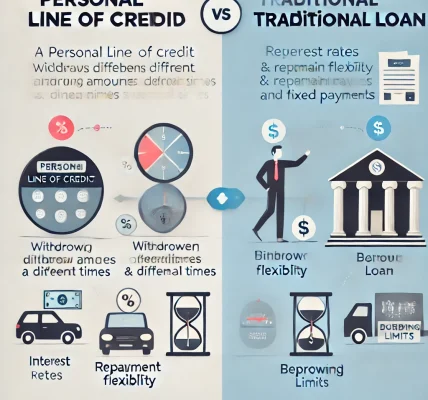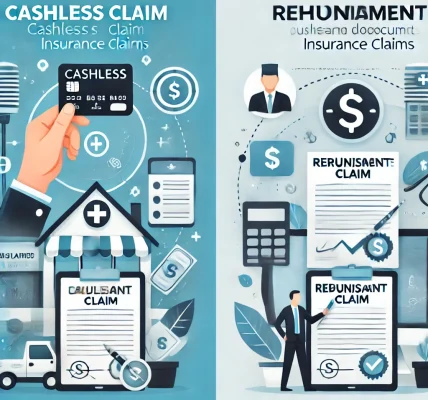Introduction
Car insurance is essential for protecting yourself and your vehicle from unforeseen financial liabilities. However, when it comes to filing an insurance claim, many policyholders struggle to understand the difference between third-party and own damage insurance claims. Knowing how these two types of claims work can help you make an informed decision while purchasing or renewing your insurance policy and ensure a hassle-free claims process.
In this guide, we will break down the key differences between third-party and own damage insurance claims, explain the claim process for each, and provide essential tips to maximize your claim approval chances.
What is Third-Party Insurance?
Definition:
Third-party insurance is a type of car insurance policy that covers damages or losses caused by your vehicle to another person, their property, or vehicle. It is a legal requirement in many countries and is mandatory under the Motor Vehicles Act in India.
Coverage:
A third-party insurance policy covers:
- Bodily injury or death of a third party (another driver, pedestrian, or any other person affected by the accident).
- Property damage (damage to another person’s vehicle, building, or public property).
Exclusions:
- Damage to your own vehicle.
- Personal injuries sustained by you (the policyholder).
- Any claims arising out of drunk driving or reckless driving.
Claim Process:
- Inform your insurer: Notify your insurance provider about the accident immediately.
- File an FIR: In case of third-party injuries or significant property damage, an FIR must be lodged at the nearest police station.
- Provide documentation: Submit relevant documents, including the FIR, insurance policy copy, and vehicle registration certificate.
- Claim assessment: The insurance company will appoint a surveyor to evaluate the damages.
- Legal proceedings: Third-party claims are usually settled through a Motor Accident Claims Tribunal (MACT) or court.
- Claim settlement: The insurer compensates the affected party based on the court’s decision.
Pros of Third-Party Insurance:
✔ Mandatory by law, ensuring compliance. ✔ Covers legal liabilities arising from an accident. ✔ Affordable as it does not cover own damage expenses.
Cons of Third-Party Insurance:
✖ Does not cover damages to your own vehicle. ✖ Limited scope compared to comprehensive insurance. ✖ Compensation amount is determined by the court, which may take time.
What is Own Damage Insurance?
Definition:
Own damage (OD) insurance provides coverage for damages caused to your own vehicle due to accidents, natural disasters, fire, theft, or vandalism. Unlike third-party insurance, own damage cover is optional and can be purchased separately or as part of a comprehensive policy.
Coverage:
An own damage insurance policy covers:
- Accidental damages (collisions, crashes, etc.).
- Fire and explosion damage.
- Theft of the vehicle.
- Natural disasters (floods, earthquakes, storms, etc.).
- Man-made disasters (riots, strikes, vandalism, etc.).
Exclusions:
- Damage due to normal wear and tear.
- Electrical or mechanical breakdowns.
- Driving under the influence of alcohol or drugs.
- Damage occurring due to illegal activities or reckless driving.
Claim Process:
- Notify your insurer: Inform the insurance company immediately after an accident or incident.
- File an FIR if needed: For major accidents, theft, or third-party involvement, an FIR must be lodged.
- Surveyor assessment: The insurer appoints a surveyor to inspect the damages.
- Repair process: If approved, you can get your car repaired at a network garage (cashless claim) or a non-network garage (reimbursement claim).
- Claim settlement: The insurer pays for the damages as per the terms of your policy.
Pros of Own Damage Insurance:
✔ Covers expenses for repairs or replacement of your vehicle. ✔ Offers protection against theft and natural calamities. ✔ Reduces financial burden in case of an accident.
Cons of Own Damage Insurance:
✖ Higher premium compared to third-party insurance. ✖ Does not cover third-party liabilities unless part of a comprehensive policy. ✖ Claim approval may require thorough documentation and inspection.
Third-Party vs Own Damage Insurance: Key Differences
| Factor | Third-Party Insurance | Own Damage Insurance |
|---|---|---|
| Coverage | Covers third-party liability for injuries or damages. | Covers damages to the policyholder’s own vehicle. |
| Legal Requirement | Mandatory under motor vehicle laws. | Optional, but highly recommended. |
| Premium Cost | Lower as it covers only third-party liability. | Higher due to broader coverage. |
| Claim Process | Settled through MACT/court decisions. | Settled directly with the insurer. |
| Compensation Limit | Limited by the insurer and court verdict. | Based on the insured declared value (IDV). |
| Personal Injury Cover | Not covered (requires a separate personal accident cover). | Covered under comprehensive insurance. |
| Coverage Against Theft/Natural Disasters | Not included. | Included. |
Which One Should You Choose?
- If you own an old car with a lower market value, third-party insurance may be sufficient to meet legal requirements at a lower cost.
- If you have a new or expensive car, own damage insurance (or a comprehensive policy) is recommended to protect against financial losses.
- If you frequently drive in high-risk areas (accident-prone zones or theft-prone areas), an own damage cover ensures better financial security.
Best Option:
For the best protection, it is advisable to opt for a comprehensive insurance policy, which includes both third-party and own damage coverage, ensuring complete financial security.
Final Tips for a Hassle-Free Claim Process
✅ Always report an accident immediately to your insurer and, if necessary, the police. ✅ Keep all necessary documents (policy papers, RC, driver’s license, FIR, etc.) ready. ✅ Capture photos of the accident scene as proof for your claim. ✅ Follow the insurer’s guidelines to avoid claim rejection. ✅ Opt for add-ons like zero depreciation, roadside assistance, and engine protection for enhanced coverage.
Conclusion
Understanding the difference between third-party and own damage insurance is crucial when making an insurance claim. While third-party insurance is legally required and protects against liabilities, own damage insurance offers coverage for repairs and damages to your vehicle. Choosing the right policy based on your needs ensures financial security and a smooth claim settlement process.
For maximum coverage and peace of mind, opting for a comprehensive insurance policy that includes both third-party and own damage insurance is always a wise choice.
Have you ever filed an insurance claim? Share your experience in the comments below!




